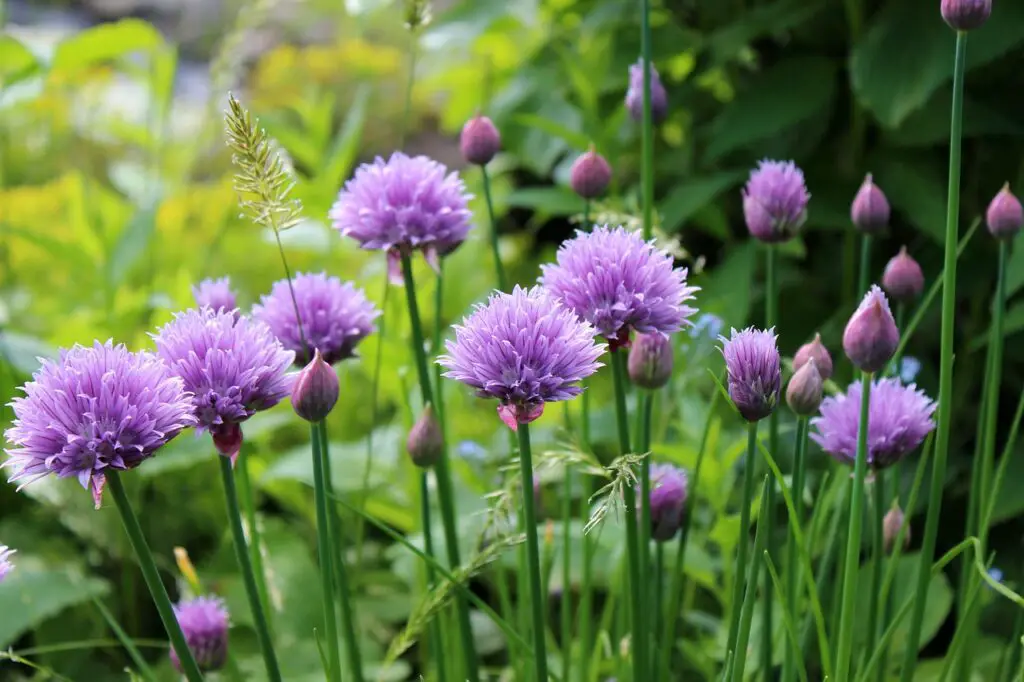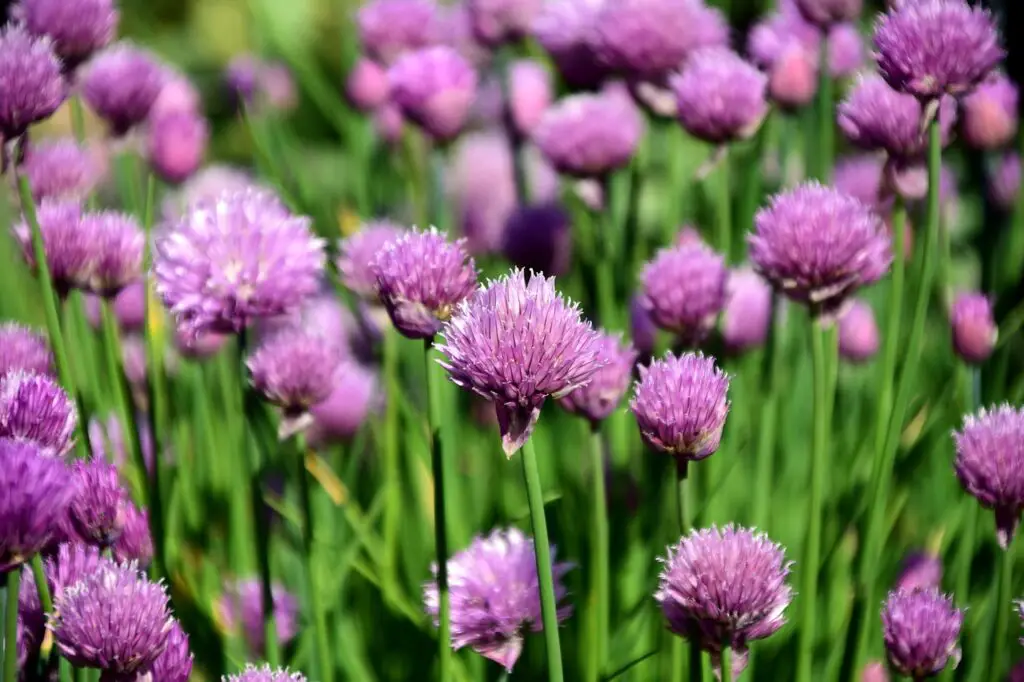Are you looking for an easy-to-grow herb that you can enjoy indoors? If so, then chives may be the perfect choice for you! In this blog post, we will discuss why you should grow chives indoors and share some tips on how to do it.
Chives are a member of the onion family and have a mild, onion-like flavor. They are often used as a garnish or added to salads, soups, and other dishes for flavor. Chives are also a good source of vitamins A and C, as well as potassium and calcium.
Growing chives indoors is relatively easy and only requires a few simple supplies. Plus, once they are established, they will provide you with an ongoing supply of fresh chives to use in your cooking. So if you’re ready to get started, read on for everything you need to know about growing chives indoors!

Why You Should Grow Chives Indoors.
Chives are a versatile and easy-to-grow herb that can add flavor and nutrition to your diet. Chives are a member of the onion family and have a milder flavor than onions. They can be used fresh or cooked and are a good source of vitamins A and C, as well as potassium and iron. Chives are also known for their medicinal properties and have been used to treat colds, coughs, and stomach upset.
How to Grow Chives Indoors.
Chives are best started from seed, but can also be propagated from division of existing plants. To start from seed, sow chive seeds in well-drained soil in early spring, about 6 weeks before the last frost date. Keep the soil moist but not wet and plant the seeds about ½ inch deep. When the seedlings emerge, thin them to 4 inches apart. Chives prefer full sun but will tolerate partial shade. Water regularly to keep the soil moist but not wet. Harvest chives when they are 6-8 inches tall by snipping off the leaves with scissors just above ground level.
The Benefits of Growing Chives Indoors.
Chives are one of the easiest herbs to grow indoors. They require very little care and can be grown in a wide range of conditions. All you need is a pot, some well-drained soil, and plenty of sunlight.
Chives Are a Nutritious Addition to Your Diet.
Chives are a rich source of vitamins A and C, as well as being a good source of dietary fiber. They also contain a number of minerals, including potassium, calcium, and magnesium. Adding chives to your diet can help boost your immune system and protect against various diseases.
Chives Can Be Used in a Variety of Recipes.
Chives can be used fresh or dried, in both cooked and raw dishes. They have a mild onion flavor that enhances the flavor of many dishes without overpowering them. You can add chives to soups, salads, pasta dishes, omelets, baked goods, and much more.
How to Grow Chives Indoors.
To grow chives indoors, you’ll need to start with good quality chive seeds. Look for seeds that are dark in color and have a smooth, uniform appearance. Avoid seeds that are light in color or have a rough, uneven appearance.
Plant the Chive Seeds in Well-Drained Soil.
Chives prefer well-drained soil that is high in organic matter. If your soil is heavy or clay-like, mix in some organic matter such as compost or peat moss to help improve drainage. Once you’ve prepared the soil, plant the chive seeds about ½ inch deep and space them about 2 inches apart.
Give the Chives Plenty of Sunlight.
Chives need at least 6 hours of sunlight per day to thrive. If you live in an area with long winters and short days, you may need to supplement natural sunlight with artificial lighting such as fluorescent bulbs. Place the lights about 6 inches above the plants and leave them on for 14-16 hours per day.
Water the Chives Regularly.
Water your chives regularly to keep the soil moist but not soggy. Chives do not like wet feet so be sure the drainage is good and they are not sitting in waterlogged soil. When watering, avoid getting water on the leaves to prevent fungal diseases from developing.
Harvest the Chives When They Are Ready
You can begin harvesting chives when they are 8-10 inches tall by snipping off the leaves with a sharp knife or scissors. Cut just above where a leaf meets the stem and be sure to leave some leaves behind so the plant can continue growing. Chives can be harvested multiple times throughout the growing season.

Conclusion
If you’re looking for an easy-to-grow herb that can add a bit of flavor and nutrition to your diet, chives are a great choice. Chives are easy to grow indoors, and they don’t require a lot of care or attention. With just a few simple tips, you can have a thriving indoor chive garden.
FAQ
How Do You Keep Indoor Chives Alive
Chives are one of the scariest herbs you could grow at home. They are very robust and keep managed through drought perfectly fine. But to keep the most happy, you should try to keep the soil damp and find a sunny spot for the pot to stay in.
Will Chives Regrow After Cutting
Chives are one of those plants that will grow back almost even more after cutting it. As long as you make sure the soil is kept damp and well fertilized and it can grow in a sunny spot, you will have chives coming back.
Do Chives Need Direct Sunlight
Chives do grow the best in direct sunlight, but it’s not a complete necessity. If you have other plants that need it more, feel free to move them around and give your chives some rest in the shade.

